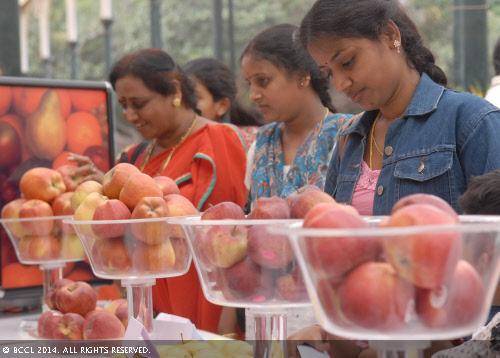Hyderabad :
While the Greek hero Hercules wanted to possess the fruit desperately, Adam – the first man in Abrahamic religions – apparently couldn’t resist eating it and was then desperate. Whatever the reasons, few fruits have enjoyed the clout of apple, one of the oldest cultivated trees on Earth.
In India, its farming has so far been limited mostly to the Himalayan region – Kashmir, Himachal Pradesh and Uttarakhand as well as pockets of the North East. But if scientists at Hyderabad’s Centre for Cellular and Molecular Biology (CCMB) have their way, they could soon be grown in Araku Valley of Andhra Pradesh.![]()
For some time now, the changing climatic conditions in the Himalayan region have been hurting apple production, forcing scientists to look for alternatives. Know as the Kashmir of Andhra Pradesh, Araku is blessed with a temperate climate and low temperatures that is suited for growing apples; at least, in theory.

Situated at about 3,600 feet above the sea level, the Araku Valley area records temperatures of 1-5 degrees centigrade during winters. “Since apples are grown at high altitude areas with low temperatures in winters, we hope the locations in the Araku valley area that we chose for the experiment will yield positive results over the next four-five years,” said Ramesh Aggarwal, who heads a team of CCMB scientists working on the project.
 The CCMB scientists are exploring the prospects of growing the fruit – which originated in the Central Asian region, most likely Kazakhstan – in the Lambasingi and Chintapally regions of Araku in Andhra Pradesh’s Visakhapatnam district.
The CCMB scientists are exploring the prospects of growing the fruit – which originated in the Central Asian region, most likely Kazakhstan – in the Lambasingi and Chintapally regions of Araku in Andhra Pradesh’s Visakhapatnam district.
The scientists began work a few years ago to develop new breeds that are resistant to changing climatic conditions while ensuring high yields as part of a genomics sequencing project sponsored by the Department of Biotechnology. They hope to identify genes that give the plant characteristics such as disease and drought resistance. Today there are more than 7,500 varieties of apples grown worldwide, of which at least 300 are cultivated in India commercially. It is said that Alexander the Great first brought the dwarf varieties to Europe (Macedonia) in the fourth century BC, from where it found its way to the rest of the world.
Aggarwal said his team recently visited Araku valley and held discussions with local farmers, non-governmental organisations and researchers to explore growing apples there. If the Araku experiment succeeds, the scientists plan to replicate it in other hilly regions of the South, including the Nilgiris in Tamil Nadu and Coorg in Karnataka.
“To begin with, we will experiment with some 100 saplings of seven leading apple varieties by this month end and increase the number of plants to around 500 over the next one year,” said Aggarwal.
In India, the fifth-largest producer of the fruit worldwide, apples were first grown only towards the end of the 19th Century. But it was Samuel Evans Stokes, or Satyananda Stokes as he was later known, who introduced apple cultivation to Himachal Pradesh in the early part of the last century. Today, it is the major horticultural export crop of the state.
The CCMB scientists are sourcing the saplings of apple variants from Dr YS Parmar University of Horticulture and Forestry at Solan in Himachal Pradesh.
Senior principal scientist at CCMB, A Veerabhadra Rao said studies showed that the climate of Chintapally region was identical to California and Florida in the United States, where apple is grown on a large scale.
Venugopal Rao, head of research at Acharya NG Ranga Agricultural University at Chintapally, said if the results of the experiment are positive, a memorandum of understanding with CCMB will be signed to implement the project on a larger scale.
source: http://www.articles.economictimes.indiatimes.com / The Economic Times / Home> News> Economy> Agriculture> Andhra Pradesh / by Raji Reddy Kesireddy, ET Bureau / January 18th, 2014